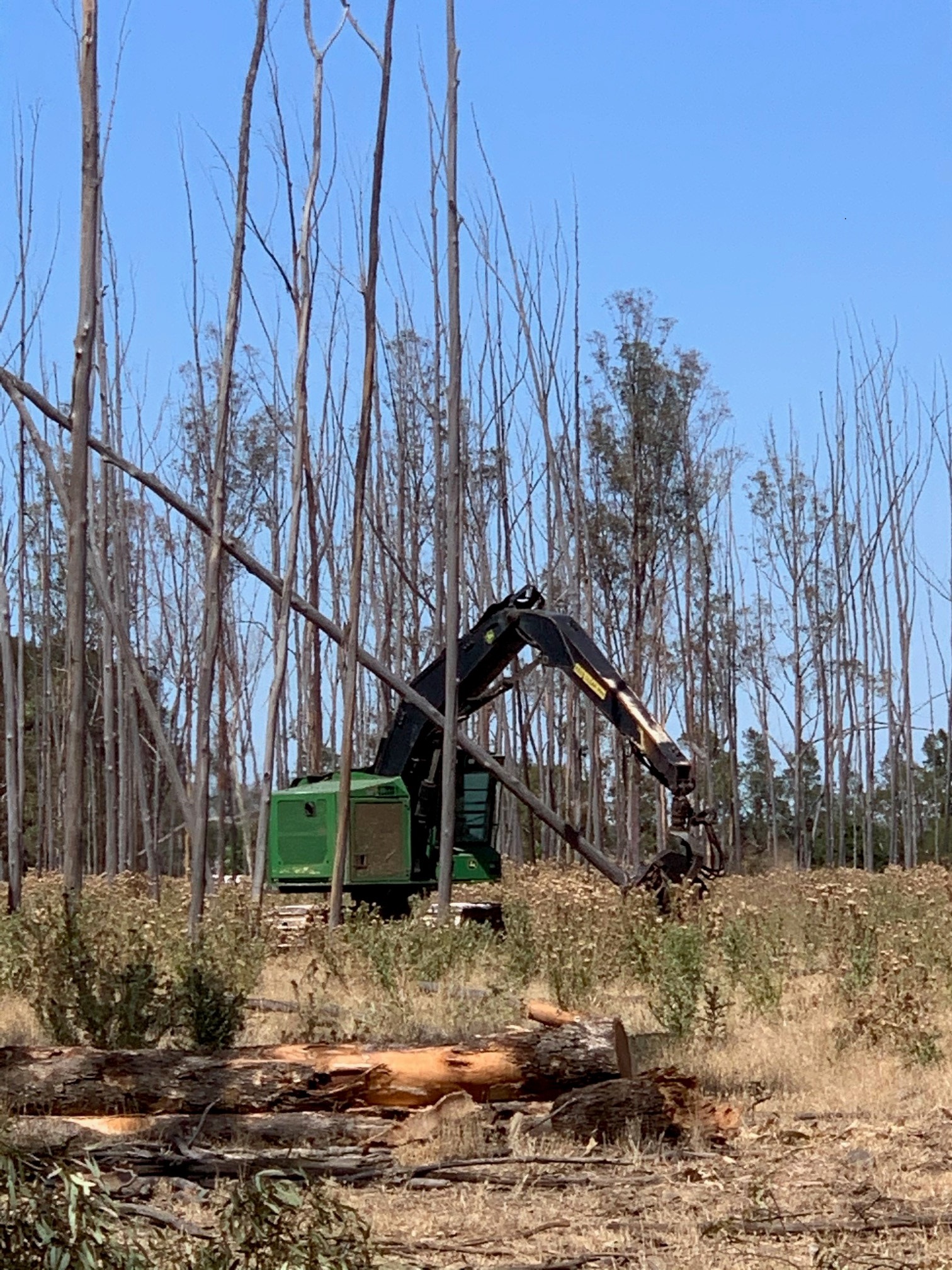10 December 2020
A tree harvesting project has just begun at Goulburn Valley Water’s (GVW) Shepparton Wastewater Management Facility (WMF) to help remediate the land and transform it into productive irrigated farming with vegetation corridors.
More than 60 hectares of different tree species were planted across six lots in the early 2000s, with many of the trees now at an age ready for harvesting. Native vegetation is set to be replanted in some sections to enhance the area’s vegetation corridors and connectivity to the Goulburn River for wildlife.
The trees had been irrigated with treated wastewater as part of GVW’s water recycling program, which last year saw more than 97% of treated wastewater reused beneficially across GVW’s service area.
Harvesting will begin on a lot along Daldy Rd, before moving to lots along Shepparton-Barmah Rd – motorists are advised there may be additional heavy machinery in the area.
GVW Managing Director Steve Capewell said it was a positive outcome that would see land used more productively.
“A variety of different tree species was planted at the site in the early 2000s in a trial to understand suitability for water reuse and irrigation for commercial timber plantation, however most of the land has been recommended for harvesting in recent soil and sustainability assessments,” Dr Capewell said.
“This will allow us to rehabilitate the land to make it more suitable for flood irrigation, which is a focus for GVW’s farming operations centred around fodder production and grazing livestock.”
Transitioning the land will also help boost irrigation productivity on the land, allowing for an additional 360ML of water to be reused through irrigation of the rehabilitated lots each year.
“We’ve been working with local environment groups and authorities to ensure we replant some areas with native vegetation, so the land continues to be an important part of the area’s native vegetation and wildlife corridor,” Dr Capewell said.
“We’ll be retaining some trees in an 8ha plantation section, while other sections with a combined area of about 52ha will be harvested and rehabilitated, except for corridors where trees will remain as a nature reserve for local wildlife and to create a buffer along the boundaries.”
GVW will work with local authorities to find a suitable community use for the harvested timber.
Following the harvesting, soil rehabilitation and native vegetation planting, GVW will also investigate upgrades to the irrigation systems and fencing.
